DODONAEA
Dodonaea
Mill., Gard. Dict. Abr., ed. 4 [s.p.]. 1754; Hiern in Hook. f., Fl. Brit. Ind. 1: 697. 1875; Cooke, Fl. Bomb. Pres. 2: 269. 1902; Talbot, For. Fl. 1: 342. 1909; Bailey, Stand. Cyclop. Hort. 2: 1064. 1919; Fl. China @ eFloras.org 12: 6,7; Fl. Pak. @ eFloras.org
Shrubs or small trees, evergreen, sometimes with a glandular resinous exudate on leaves and inflorescences, young shoots viscid. Leaves alternate, simple or pinnate, exstipulate. Flowers small, actinomorphic, bisexual or unisexual, if unisexual then plants dioecious, solitary and axillary or arranged in terminal and axillary racemes, corymbs or panicles. Sepals 3-5, valvate or sometimes imbricate, deciduous when mature. Petals absent. Disk conspicuous, annular in female flowers, absent in male flowers. Stamens (Male Flowers) 5-8; filaments short; anthers ellipsoid, obtusely 4-gonous, connective prominent. Ovary (Female Flowers) sessile, ellipsoid, obcordiform, or transversely ellipsoid, 2 or 3 (or 5 or 6)-gonous, 2-6 locular, ovules 2 per loculus, 1 ascending and 1 pendulous; style apical, much longer than ovary, often twisted, deciduous; stigma 2-6 lobed. Capsules samara like, 2 or 3 (-6)- locular, septicidal, boat-like. Seeds 1 or 2 per locule, obovoid, lenticular or subglobose; testa crustaceous, arillode present or absent; hilum thick; embryo revolute, cotyledons linear.
72 species
Dodonaea viscosa
Dodonaea viscosa
(L.) Jacq., Enum. Pl. Carib. 19. 1760; Linn., Mant. Pl. Alt. 2: 228. 1771; Hiern in Hook. f., Fl. Brit. Ind. 1: 697. 1875; Cooke, Fl. Bomb. Pres. 2: 269. 1902; Collett, Fl. Siml., 100. 1902; ed. 2:100. 1921 (Reprint 1980); Talbot, For. Fl. 1: 342. 1909; Bailey, Stand. Cyclop. Hort. 2: 1064. 1919; Parker, For. Fl. Punj., ed. 1: 107. 1918 (Reprint 1973); and ed. 3: 105. 1956; Fl. China @ eFloras.org 12: 6,7; Fl. Pak. @ eFloras.org; D. dioca Roxb. ex DC., Mem. Soc. Phys. Geneve 1: 447. 1822.
An evergreen dioecious shrub, sometimes a small tree, 3-4 m tall; branches erect, twiggy, angular, young parts more or less viscid with a yellow resinous exudation. Leaves exstipulate, alternate, subsessile, 4-10.5 cm x 1-2 cm, simple, oblanceolate to spathulate, margin entire or shallowly wavy, apex subacute to apiculate, obtuse or rounded, base cuneately attenuate, bright green, glabrous, shining, more or less viscid with yellowish resin, thinly coriaceous, lateral veins many, dense. Flowers small, actinomorphic, unisexual, female flowers hypogynous, greenish yellow, usually arranged in ca. 3 cm long terminal or axillary panicles near apices, shorter than leaves, densely flowered, rachis and branches ridged; pedicels 4-8 mm long. Male Flowers: Sepals 4-6, free, or connate at base, narrowly elliptic or lanceolate, ca. 3 mm long, 1.2-2 mm wide, apex obtuse, abaxially pubescent. Corolla and disk absent. Stamens 8(-10), free; filaments very short, ca. 0.5 mm long, basifixed; anthers ca. 3 mm long, incurved, ellipsoid or oblong, obtusely 4-gonous, sparsely hairy at apex, connective prominent, dehiscence longitudinal. Pistillode present, small, hairy. Female Flowers: Calyx as in male flowers. Corolla and stamens absent. Disk annular, cushion-shaped. Ovary ca. 2.2 mm long, globose or ellipsoid, triquetrous, sparsely hairy, 3(-4)-locular, 2 ovules per loculus; style ca. 6 mm long, exceeding the sepals, cylindric, minutely papillose; stigma 3- fid. Capsule compressed-globose, 2-4-valved, 2(3)-4-winged, 1.5-2 cm long, with wings 1.8-2.5 cm wide, wings membranous, papery, veined, light brownish yellow. Seeds 1 or 2 per locule, black, lenticular.
Common Names: Hop Bush, Hopseed; Sanatta, Vilayti Mehndi, Sinatra (Hindi)
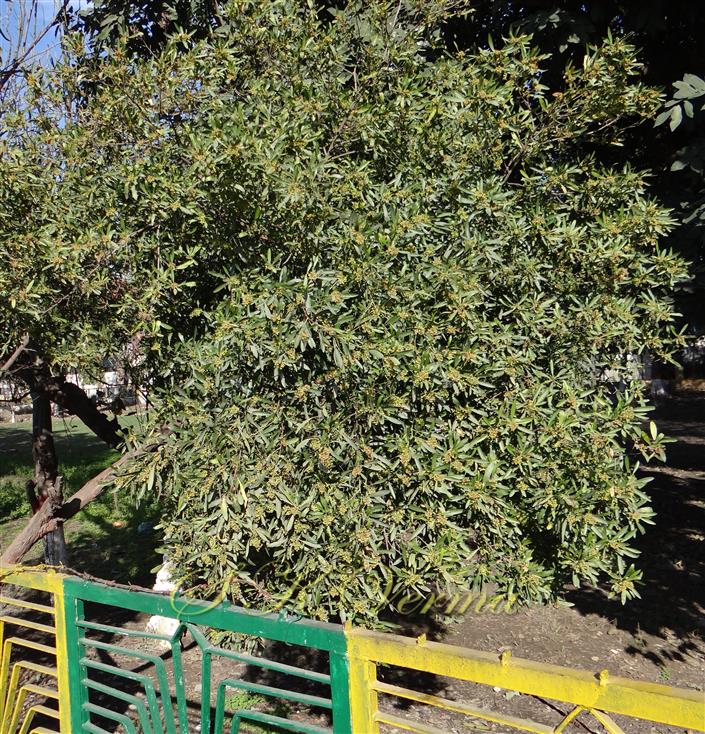
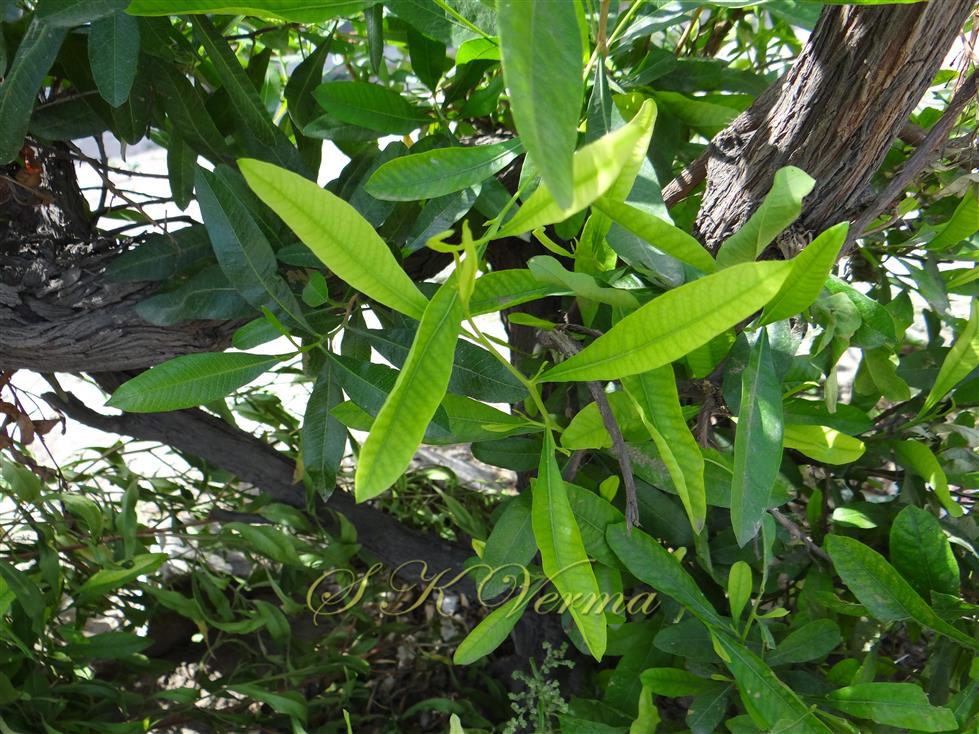
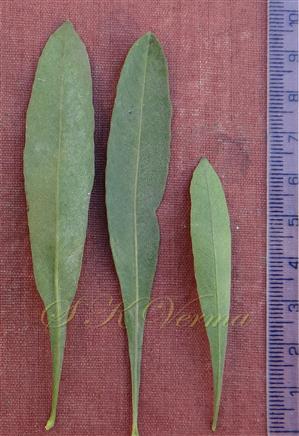
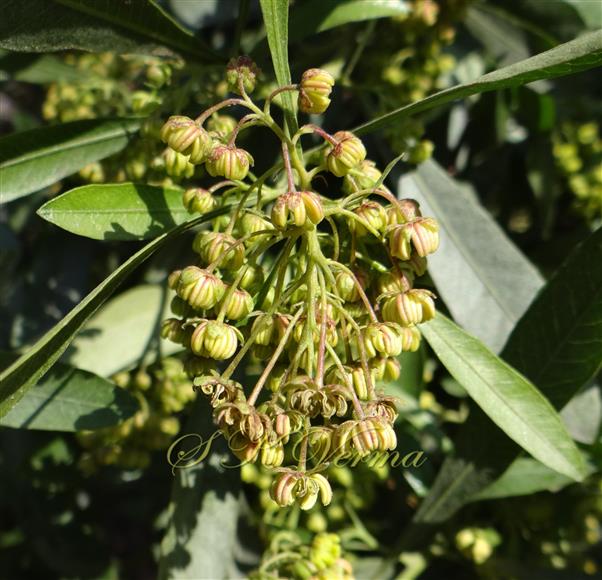
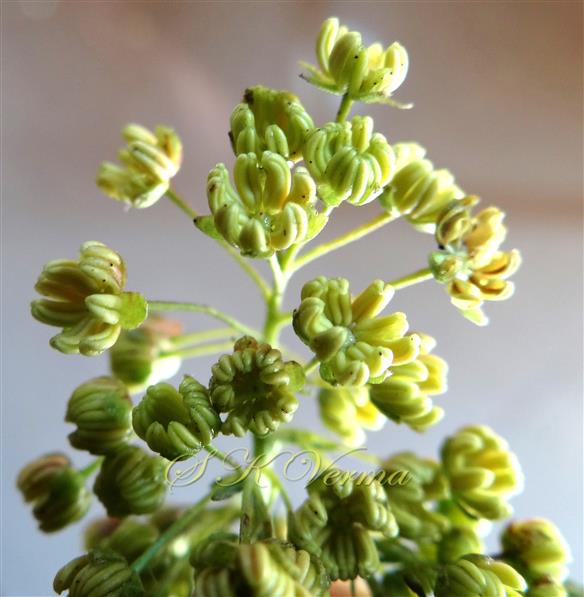
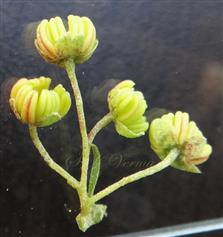
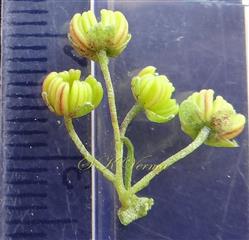

 with pistillode in centre-DSC06842.jpg)
-DSC06148.jpg)
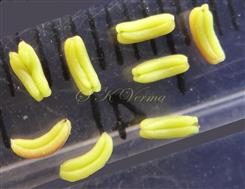


-DSC04884.jpg)

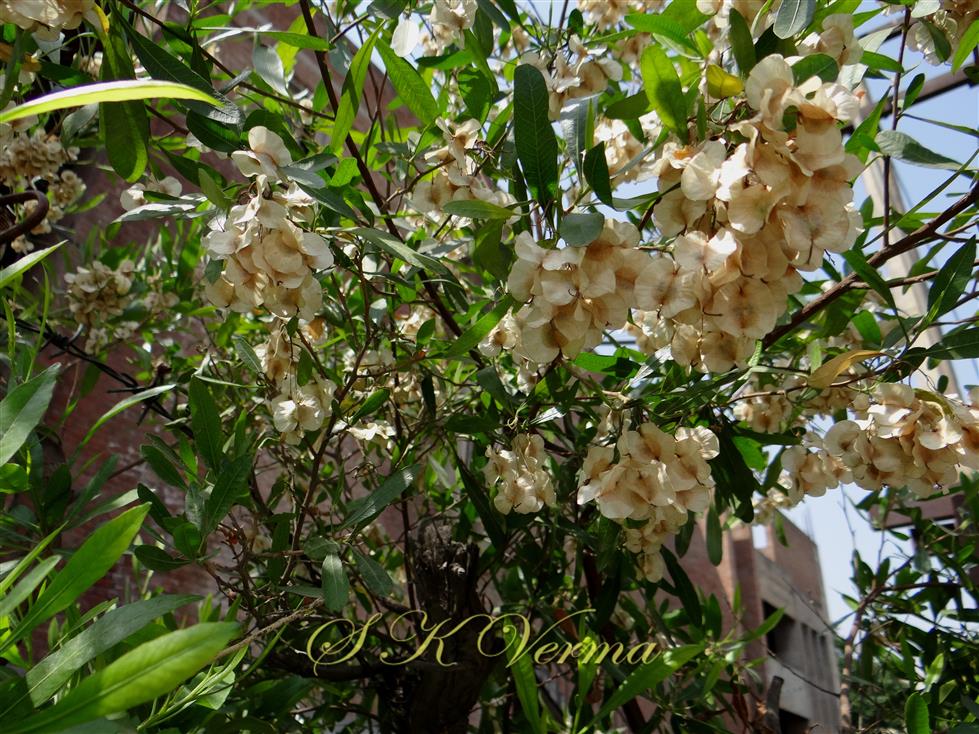
-DSC05783.jpg)








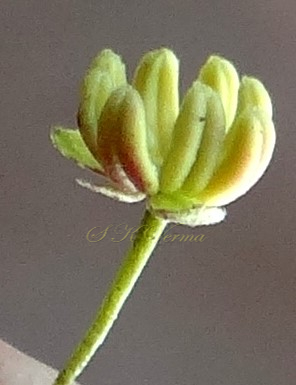
 with pistillode in centre-DSC06842.jpg)
-DSC06148.jpg)

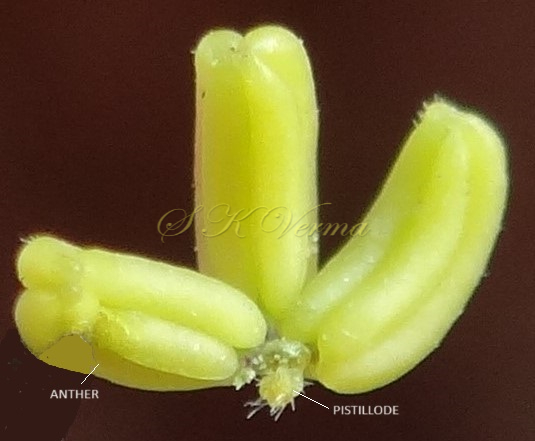
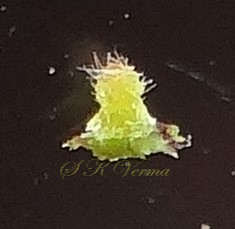
-DSC04884.jpg)


-DSC05783.jpg)